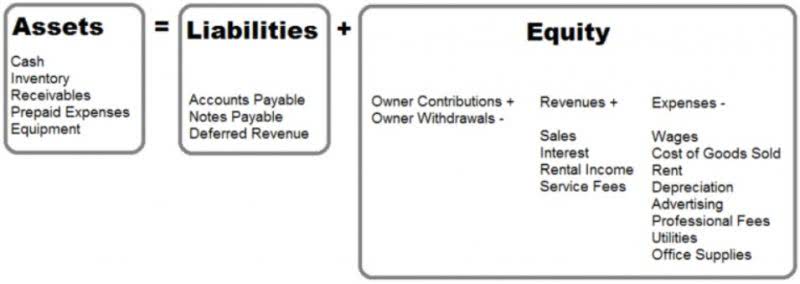
Most larger organizations are required to publish their financial reports detailing their income and expenditure publicly. There is an important distinction in the US between non-profit and not-for-profit organizations (NFPOs); while an NFPO does not profit its owners, and money goes into running the organization, it is not required to operate for the public good. An example is a sports club, whose purpose is its members’ enjoyment.[3] The names used and precise regulations vary from one jurisdiction to another. Section 501(c)(3) organizations are restricted in how much political and legislative (lobbying) activities they may conduct. For more information about lobbying activities by charities, see the article Lobbying IssuesPDF; for more information about political activities of charities, see the FY-2002 CPE topic Election Year IssuesPDF.
Project Veritas claimed James O’Keefe risked group’s nonprofit status – The Washington Post
Project Veritas claimed James O’Keefe risked group’s nonprofit status.
Posted: Tue, 21 Feb 2023 08:00:00 GMT [source]
nonprofit organization
- These types of organizations may not benefit the greater society, but typically operate to serve the goals of their members, such as a business league that collects dues in order to host workshops for members.
- Many well-known nonprofit organizations play a big role in addressing social, environmental and humanitarian issues around the globe and are usually run by volunteers.
- To be tax-exempt under section 501(c)(3) of the Internal Revenue Code, an organization must be organized and operated exclusively for exempt purposes set forth in section 501(c)(3), and none of its earnings may inure to any private shareholder or individual.
- For instance, annual filing requirements include a corporate annual report, IRS Form 990, and state charitable solicitations registration and renewal.
- A brief description of the requirements for exemption for employees’ associations under IRC sections 501(c)(4), 501(c)(9), and 501(c)(17).
- Accrual accounting recognizes that $2,000 in revenue on the date of the purchase.
A private foundation is typically held by an individual, a family, or a corporation and it obtains most of its income from a small group of donors. Private foundations are subject to stricter rules and regulations than public charities. An organization must not be serving any private interests to be tax-exempt under Section 501(c)(3). These include the interests of the creator, the creator’s family, shareholders of the organization, other designated individuals, or other persons controlled by private interests. None of the net earnings of the organization can be used to benefit any private shareholder or individual.
Allowed activities
An organization must maintain the purpose that it has previously reported to the IRS, such as that its mission is to help less privileged individuals gain access to a college education. The 501(c)(3) organization must first notify the IRS of its 5013c meaning change of operations if it decides to engage in another calling, such as sending relief to displaced families in poverty-stricken countries. Basic accounting concepts used in the business world cover revenues, expenses, assets, and liabilities.

Retained Earnings

Liabilities promised on the full faith and credit of the organization but not recorded anywhere constitute accounting fraud. Learn more about the benefits, limitations and expectations of tax-exempt organizations by attending 10 courses at the online Small to Mid-Size Tax Exempt Organization Workshop. It’s important to note that the specific rules and regulations for both types of organizations can be complex and subject to interpretation. Consulting with legal and tax professionals is recommended to ensure compliance with the requirements and to fully understand the implications of each designation. Income-producing activities not related to the group’s nonprofit purpose are limited.
It may well be worth it; people may donate more than they otherwise would because of the tax exemption and perceived increase in legitimacy 501(c)(3) status conveys. As mentioned, “not-for-profit” isn’t an official legal term and may be better understood as an exempt organization that falls under the IRS’s “other nonprofits” section. These are most commonly social welfare organizations, civic leagues, social clubs, labor organizations, veterans’ clubs and business leagues. These types of organizations may not benefit the greater society, but typically operate to serve the goals of their members, such as a business league that collects dues in order to host workshops for members. Apply for the 501(c)(3) IRS exemption (Form 1023) and state tax exemption for nonprofit organizations after you’ve filed.

Requirements of a 501(c)( Organization
The articles of incorporation must be filed with the state in which it will be organized and according to the state’s rules for nonprofit organizations. Individuals who donate to an organization that the IRS considers to be a public charity may qualify for certain tax deductions that can help them lower their taxable income. Some unrelated business income is allowed for a 501(c)(3) organization but the tax-exempt charity may not receive substantial income from unrelated business operations.
26 U.S.C. § 170 provides a deduction for federal income tax purposes, for some donors who make charitable contributions to most types of 501(c)(3) organizations, among others. Regulations specify which such deductions must be verifiable to be allowed (e.g., receipts for donations https://www.bookstime.com/articles/what-are-t-accounts of $250 or more). Private foundations are usually thought of as nonprofits that support the work of public charities through grants, though that is not always the case. Donations to private foundations can be tax-deductible to the individual donor up to 30% of the donor’s income.
Each transaction recorded in a general ledger or one of its sub-accounts is known as a journal entry. A fixed cost (or fixed expense) is a cost that stays the same regardless of increases or decreases in a company’s output or revenues. The term is sometimes used alongside “operating cost” or “operating expense” (OPEX). Double-entry systems add assets, liabilities, and equity to the organization’s financial tracking. Accounts receivable are sometimes called “trade receivables.” In most cases, accounts receivable derive from products or services supplied on credit or without an upfront payment. An accounting period defines the length of time covered by a financial statement or operation.
Businesses must account for overhead carefully, as it has a significant impact on price-point decisions regarding a company’s products and services. A liability (LIAB) occurs when an individual or business owes money to another person or organization. At a basic level, equity describes the amount of money that would remain if a business sold all its assets and paid off all its debts. It therefore defines the stake in a company collectively held by its owner(s) and any investors.The term “owner’s equity” covers the stake belonging to the owner(s) of a privately held company.

